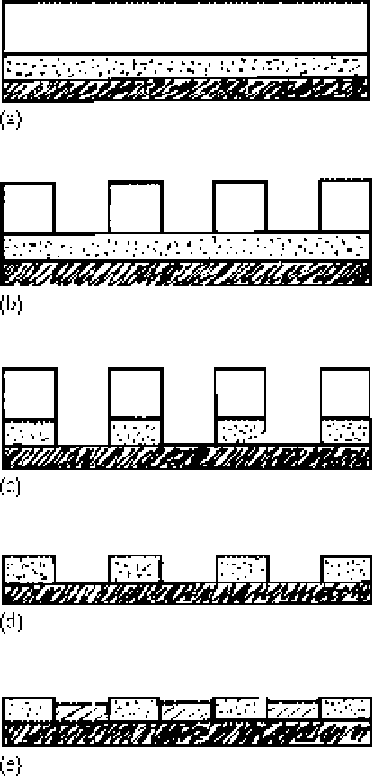Environmental Engineering Reference
In-Depth Information
Figure 7.3
Stages of the microfabrication
process: (a) the initial view of a sample, the
upper layer is a photoresist; (b) irradiation of
a sample and removal of part of the photore-
sist according to patterns of a replicate; (c)
the etching process; (d) removal of the pho-
toresist; (e) deposition of another material.
methods, but they are not anisotropic. Chemically active particles may not act on a
photoresist, but they do act on the total surface of a removal layer, and the structure
thus formed does not have vertical boundaries. The best result for the etching pro-
cess comes from a combination of plasma methods that provides a selective and
anisotropic etching process.
As a demonstration of this possibility, we consider the etching of Al film. This
filmmay be removed by reaction with chlorine atoms or chlorinemolecules that are
formed in a gas discharge. The product of these reactions is AlCl
3
gas, which then
leaves the system. Because Cl and Cl
2
do not react with a photoresist, such a process
is selective, but it is not anisotropic. Addition of CCl
4
or CHCl
3
chlorocarbons to
chlorine in the discharge gas leads to the formation of a polymer that covers the
sample with a thin film. The film thus formed hampers the penetration of Cl and

